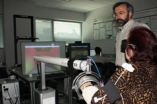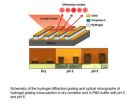(Press-News.org) COLUMBUS, Ohio – Government regulators could more realistically assess the value of improving food safety if they considered the fact that consumers typically want to avoid getting sick – even if it means they have to pay a little extra for safer food, researchers say.
In the world of food regulation, cost-benefit analyses are a primary tool for assessing the societal benefits of mandating more stringent – and more expensive – processing practices. In most cases, regulators determine a dollar value associated with pursuing new rules by estimating how many illnesses and deaths the safer processing would prevent.
But a recent study proposes a new way to approach these estimates. Instead of focusing on reducing food-borne illnesses and deaths associated with a specific pathogen, why not ask consumers how valuable food-safety improvements are to them? The researchers conducted such a national survey that they designed with the help of an economic model that predicts consumer behavior.
The results suggested that Americans would be willing to pay about a dollar per person each year, or an estimated $305 million in the aggregate, for a 10 percent reduction in the likelihood that hamburger they buy in the supermarket is contaminated by E. coli, said Brian Roe, professor of agricultural, environmental and development economics at Ohio State University and co-author of the study.
By comparison, a 2008 U.S. Department of Agriculture analysis estimated the value of eradicating a specific type of E. coli contamination from all food sources would result in a benefit valued at $446 million.
The problem with the federal estimate, Roe says, is that total eradication of the most common causes of food-borne illness is virtually impossible because of the exorbitant cost required to achieve such a goal. And, he added, the more flexible method of measurement proposed in this study suggests that consumers are willing to pay more than expected for an outcome that offers much less than total eradication of pathogens.
"We think what we are measuring is more realistic, as complete eradication is a highly unlikely outcome for any policy," Roe said. "We also are quite certain that our estimates of consumers' willingness to pay would be higher than what the USDA would calculate using its cost-of-illness approach."
Roe conducted the study with Mario Teisl of the University of Maine. The research is published in a recent issue of the journal Food Policy.
The researchers say their proposed method takes into account important variables that the average cost-benefit analysis doesn't measure, such as pain, suffering and worry, as well as food-borne illness that doesn't do any economic damage to an individual – their example is a case of food poisoning on a Friday night that resolves before the work week begins. Their estimate also accounts for human behavior: Some consumers will opt not to eat what they buy, will overcook it to ensure they kill any pathogens, or simply do not get sick even when they eat bad food.
In contrast, current methods of cost-benefit analysis involve translating an improvement in food safety into numbers: specifically, reductions in deaths and illnesses linked to a pathogen. Costs factored into the assessment might include a co-pay for a visit to the doctor and lost wages, as well as the economic costs associated with death – say, the projected income not earned when a life is cut short.
For example, to reach its $446 million estimate to eradicate E. coli cases that produce Shiga toxin and can lead to kidney damage, the USDA took the 73,480 cases of contamination that occur each year and assigned a formula-derived dollar amount to those cases to arrive at the benefit figure.
"The projections will estimate how many fewer people will die, how many fewer will get sick, and how do we assign benefit values to those improvements in the human condition," Roe said. "What we're saying is, let's think of a method where we can assign a value to that avoided case as well as one for a person who misses work and pays $20 to go to a doctor.
"To hedge their bets, would people be willing to pay $2 a year, $5 a year, to limit the odds they're going to get sick from 1 in 100 down to 1 in 1,000? That's the data you really want."
Roe and Teisl analyzed surveys from 3,511 individuals. In the questionnaire, they set up six hypothetical scenarios around the purchase of either a package of hotdogs or a pound of hamburger. They set prices for the packages – both "status quo" foods and those treated with either ethylene gas processing or electron beam irradiation to reduce contaminants – and then laid out a variety of probabilities that the treated or untreated food packages contained contamination with either E. coli or listeria, another pathogen that can cause food-borne illness.
They followed by asking respondents to choose one of three actions: buy the food treated with the pathogen-reducing technology, buy their usual brand, or stop buying this product altogether.
The results showed that consumers will reach a limit to how much they want to pay to reduce their chances of getting sick. If the treated product cost only 10 cents more than an untreated package, about 60 percent of respondents said they'd buy the improved product. But when that higher price reached $1.60 more per package, less than a third would opt for the treated product.
The structure of the survey also allowed researchers to see the influence of human behavior and opinions on likely illness outcomes.
"A lot of other research is about what goes into your mouth. But you have a lot of leeway between when you pick food up in a store and when you decide whether you're going to take a bite," Roe said. "What we're saying is this is not just about people who got sick, it's about everyone who could become sick and is worried about that and is willing to shell out a few more pennies per package to avoid that."
Among the hypothetical scenarios offered in the survey, aggregate figures for consumer willingness to pay ranged from $40 million for a 10 percent reduction of the likely presence of listeria pathogens in hotdogs to the $305 million for the 10 percent reduction in the likelihood of E. coli contamination in hamburger.
Roe noted, though, that these specific numbers are less important than the method used to reach them. He said the model used in this research to construct the hypothetical scenarios could be customized for a variety of different regulatory questions.
"If the food industry were forced to put technology in place that lowered the presence of E. coli and that ramped up prices to the extent where everybody had to pay about a dollar more out of pocket each year for hamburger, we're saying that, according to this model, that would be about an equal tradeoff for the U.S. population. And if the technology costs only about 10 cents per person instead, that would seem like a good deal to most people," he said.
"If regulators could become more comfortable with this measurement process, agencies might change the way they conduct their cost-benefit analysis. And that would be an interest of ours, to see if our work and others' work in this area will eventually change the way people attack these questions."
###
This research was supported by the Centers for Disease Control and Prevention; the University of Maine Agricultural and Forest Experiment Station; the Ohio Agricultural Research and Development Center; and the Marvin and June Morrison Chair in Agribusiness at Arizona State University.
Contact: Brian Roe, (614) 688-5777; roe.30@osu.edu
Written by Emily Caldwell, (614) 292-8310; caldwell.151@osu.edu
Study: Consumers value safer food more than current analyses suggest
2011-02-09
ELSE PRESS RELEASES FROM THIS DATE:
Thoughts of hopes, opportunities keep people from clinging to failing investments
2011-02-09
It's a common problem in the business world—throwing good money after bad. People cling to bad investments, hoping that more time, effort, and money will rescue their turkey of a project. A new study published in Psychological Science, a journal of the Association for Psychological Science, finds that changing people's mindsets can make them more likely to abandon a failing investment.
"These situations happen all the time," says Assistant Professor Daniel C. Molden, of Northwestern University, who conducted the study with his graduate student Chin Ming Hui. "They happen ...
Study shows delayed-enhancement MRI may predict, prevent strokes
2011-02-09
SALT LAKE CITY, Feb. 8, 2011 – Researchers at the University of Utah's Comprehensive Arrhythmia and Research Management (CARMA) Center have found that delayed-enhancement magnetic resonance imaging (DE-MRI) holds promise for predicting the risks of strokes, the third leading cause of death in the U.S. Their latest study on a novel application of this technology appears in the Feb. 15 issue of the Journal of the American College of Cardiology. (http://content.onlinejacc.org/cgi/content/abstract/57/7/831)
The study included 387 patients who were treated for atrial fibrillation ...
Brief diversions vastly improve focus, researchers find
2011-02-09
CHAMPAIGN, Ill. — A new study in the journal Cognition overturns a decades-old theory about the nature of attention and demonstrates that even brief diversions from a task can dramatically improve one's ability to focus on that task for prolonged periods.
The study zeroes in on a phenomenon known to anyone who's ever had trouble doing the same task for a long time: After a while, you begin to lose your focus and your performance on the task declines.
Some researchers believe that this "vigilance decrement," as they describe it, is the result of a drop in one's "attentional ...
JAMA features NJIT biomedical engineer helping stroke patients
2011-02-09
The Journal of the American Medical Society ("Medical News & Perspectives", Jan. 19, 2011) featured the research of NJIT Associate Professor Sergei Adamovich, a biomedical engineer. Adamovich and his research partners, physical therapists Alma Merians, PhD, PT, and Eugene Tunik, PhD, PT, at the University of Medicine and Dentistry of New Jersey, have developed innovative robotic and virtual reality-based video game therapies to help stroke patients regain use of hands and arms.
JAMA reported that the efforts of this team are making headway. Twenty-four patients who ...
Why leatherback turtles linger in South Pacific Gyre, and why it matters
2011-02-09
VIDEO:
Tagging and tracking leatherback sea turtles has produced new insights into the turtles' behavior in a part of the South Pacific Ocean long considered an oceanic desert. The new data...
Click here for more information.
Leatherbacks. They are the Olympians of the turtle world – swimming farther, diving deeper and venturing into colder waters than any other marine turtle species. But for all their toughness, they have still suffered a 90 percent drop in their population ...
Tool makes search for Martian life easier
2011-02-09
RICHLAND, Wash. – Finding life on Mars could get easier with a creative adaption to a common analytical tool that can be installed directly on the robotic arm of a space rover.
In a recent paper published online in the journal Planetary and Space Science, a team of researchers propose adding a laser and an ion funnel to a widely used scientific instrument, the mass spectrometer, to analyze the surfaces of rocks and other samples directly on Mars' surface. The researchers demonstrated that the combined system could work on the spot, without the sample handling that mass ...
Hydrogels used to make precise new sensor
2011-02-09
WEST LAFAYETTE, Ind. - Researchers are developing a new type of biological and chemical sensor that has few moving parts, is low-cost and yet highly sensitive, sturdy and long-lasting.
The "diffraction-based" sensors are made of thin stripes of a gelatinous material called a hydrogel, which expands and contracts depending on the acidity of its environment.
Recent research findings have demonstrated that the sensor can be used to precisely determine pH - a measure of how acidic or basic a liquid is - revealing information about substances in liquid environments, said ...
Detecting pathogens in waterways: An improved approach
2011-02-09
This press release is available in Spanish.
U.S. Department of Agriculture (USDA) scientists have come up with a way to detect pathogenic Escherichia coli and Salmonella bacteria in waterways at lower levels than any previous method. Similar methods have been developed to detect pathogenic E. coli in meat products, but the approach by the scientists with USDA's Agricultural Research Service (ARS) represents a first for waterways.
ARS is USDA's principal intramural scientific research agency, and this research supports the USDA priority of ensuring food safety.
When ...
UT Study: Charismatic leadership can be measured, learned
2011-02-09
KNOXVILLE -- How do you measure charisma? That's the question UT professor Kenneth Levine seeks to answer.
Much has been written in business management textbooks and self-help guides about the role that personal charisma plays in leadership. But according to a newly published study co-authored by Levine, a University of Tennessee, Knoxville, communications studies professor, until recently no one was able to describe and measure charisma in a systematic way.
Levine said the large amount of academic literature on charismatic leadership never defined what it means to ...
The hitch in the drug? The itch in the drug
2011-02-09
Scratching deep beneath the surface, a team of researchers from the University of California, San Diego School of Medicine and three South Korean institutions have identified two distinct neuronal signaling pathways activated by a topical cream used to treat a variety of skin diseases. One pathway produces the therapeutic benefit; the other induces severe itching as a side effect.
The findings, published in this week's early online edition of the Proceedings of the National Academy of Sciences, point to the possibility of designing future drugs that effectively treat ...



